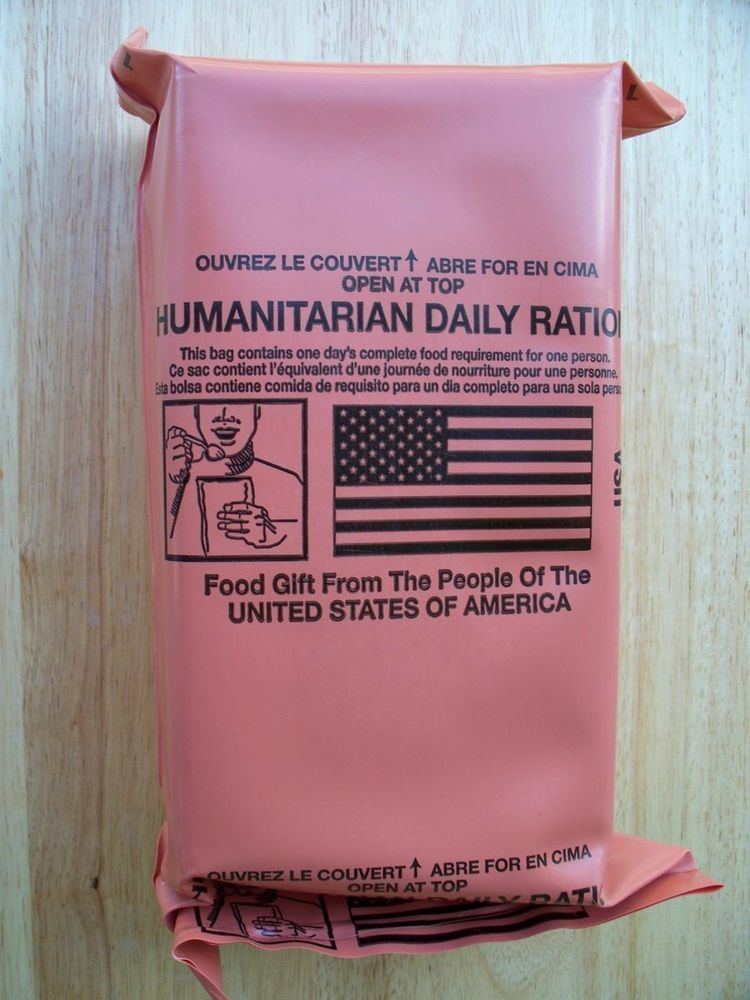 | ||
Humanitarian daily rations (HDRs) are food rations intended for humanitarian crises. Each is intended to serve as a single person's full daily food supply, and contain somewhat over 2,200 calories. They have shelf-lives of about 3 years, and their contents are designed to be acceptable to a variety of religious and ethnic groups.
Contents
- Packaging and distribution
- Typical contents
- American Humanitarian Daily Ration program in Afghanistan
- References
The rations were first used in Bosnia in 1993.
The meals are designed to be able to survive being air-dropped, without a parachute. This is safer for refugees than parachuting large pallets of rations, as well as preventing meal hoarding by those able to seize a single, large delivery.
The meals cost approximately one-fifth of the cost of a Meal, Ready-to-Eat (MRE).
HDRs are also made available through organizations such as The Salvation Army to aid victims of poverty in the United States, and were distributed during Hurricane Katrina and Hurricane Rita to victims of the disasters by the Federal Emergency Management Agency (FEMA).
Packaging and distribution
The HDR packages are delivered in cases of packages, each containing a small selection of food items based on predetermined menus and an accessory pack containing red pepper, pepper, salt, sugar, spoon, matches, an alcohol-free moist towelette, and a napkin.
HDRs produced by the United States are manufactured by the same companies that produce MREs designed for the United States Armed Forces. Like MREs, the food components are designed so they can be consumed without requiring additional preparation, including cooking. They do not include flameless ration heaters, which are found in MREs.
HDRs are typically air-dropped into the disaster area on large pallets. The HDRs initially dropped in Afghanistan were yellow before it was realized that the packages were the same color as the bomblets in American cluster bombs, which were also dropped in Afghanistan. Later packages were covered in salmon colored foil.
Typical contents
American Humanitarian Daily Ration program in Afghanistan
On October 15, 2001, The United States announced a Humanitarian daily ration for Afghanistan.
On October 24, 2001 Rear Admiral John Stufflebeem announced fears that the Taliban planned to poison American food aid. Stufflebeem said that since the program had been started on October 7, 2001 the USA had dropped 785,000 rations.
